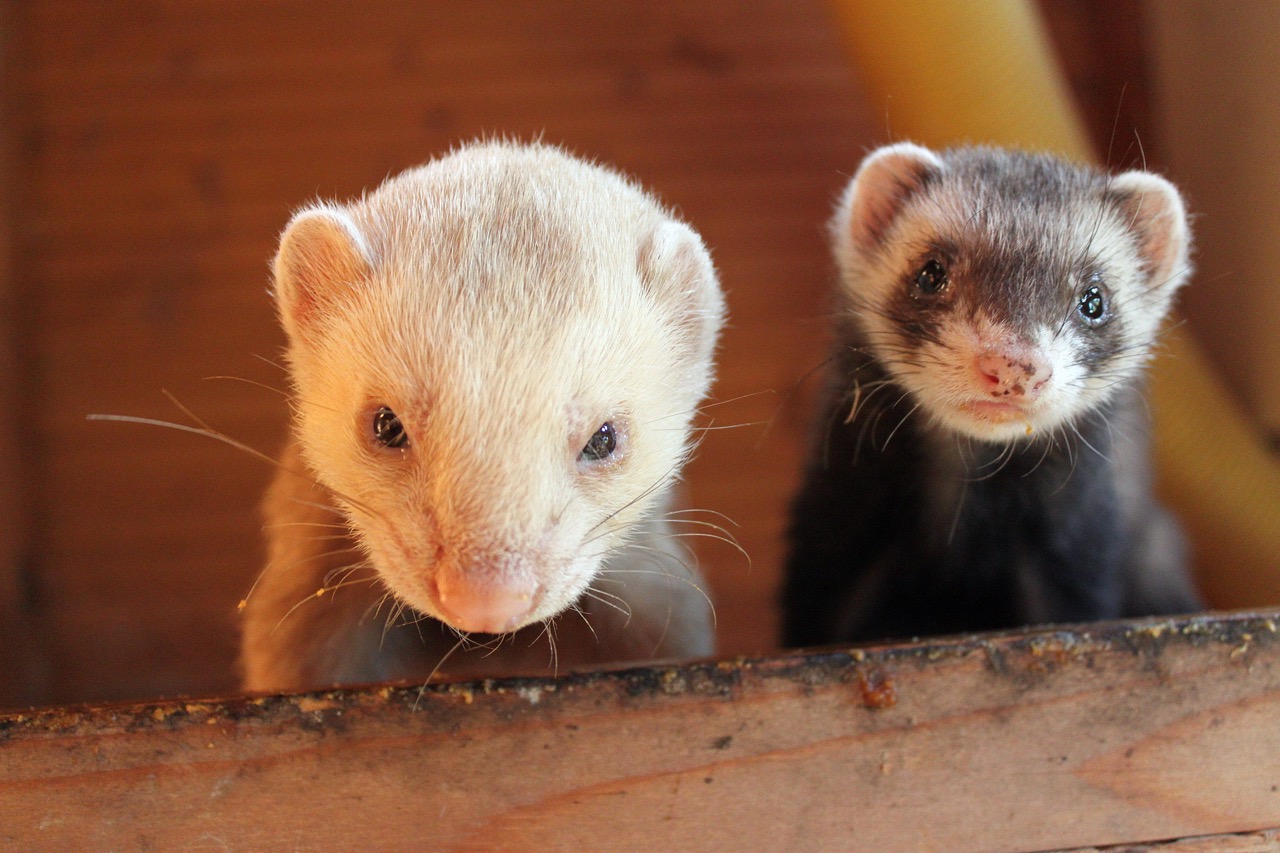Ferrets are lively and curious creatures, but they are also sensitive to temperature changes. As pets, they rely on their owners to provide them with a comfortable and safe environment. Understanding your ferret’s temperature preferences and needs is crucial for their well-being, especially when you have to transition them between different climates or seasonal changes. This article will explore ways to help your ferret adjust to varying temperatures, ensuring they remain happy and healthy.
Understanding Your Ferret’s Temperature Preferences and Needs
Ferrets are originally from temperate regions, and their ideal living temperature ranges from 60°F to 70°F (15°C to 21°C). They are not well-adapted to extreme temperatures, either hot or cold. Understanding this range is vital when considering your ferret’s living environment. Ferrets have a higher metabolism than many other pets, which means they generate body heat but can also be adversely affected by temperature drops or spikes, leading to stress or health issues.
Additionally, ferrets have a thick coat that insulates them against cold temperatures, but this same coat can make them susceptible to overheating in warmer conditions. It is important to create an environment that keeps your ferret comfortable and regulates their body temperature. Be mindful of the humidity levels in your home as well, as excessive humidity can make heat more oppressive for your pet.
Your ferret’s natural behavior can also indicate their temperature preferences. Observe how your ferret reacts to different temperatures; some may seek cooler spots when they feel too warm, while others may burrow into blankets for warmth when it’s cold. These behaviors can provide insight into whether your ferret is comfortable or if adjustments need to be made in their environment.
Creating a Comfortable Environment for Temperature Changes
To ensure that your ferret adapts comfortably to temperature changes, create a regulated environment within your home. Use air conditioning and heating systems to maintain consistent temperatures, especially during extreme heat or cold. Consider placing your ferret’s cage in a room that is naturally cool or warm, depending on the season, and away from drafts or direct sunlight that can cause temperature fluctuations.
Moreover, providing your ferret with bedding materials that promote comfort and insulation can help them adjust. Soft, breathable bedding in warm weather and thicker blankets in colder months will allow them to regulate their body temperature more effectively. Offer hiding places or burrows within their living space, as ferrets often seek out cozy spots to rest and stay warm.
Lastly, consider the use of temperature-regulating products. Heated pads or blankets can provide warmth during colder months, while cooling mats or fans can help reduce heat in the summer. Always monitor the effectiveness and safety of these products to ensure your ferret is comfortable and secure while using them.
Recognizing Signs of Temperature Stress in Ferrets
Being aware of your ferret’s behavior is essential for identifying temperature stress. Common signs include lethargy, excessive panting, or a change in appetite. If your ferret is more lethargic than usual, it may be due to an inability to regulate body temperature. Similarly, a ferret that is panting excessively may be overheated and require immediate cooling. Conversely, if your ferret is shivering or seeking out warm areas, they might be too cold and need a change in their environment.
Another sign of temperature stress is abnormal grooming behavior. Ferrets that are too hot may over-groom, leading to bald patches or skin irritations, while those that are too cold may not groom themselves effectively, resulting in a disheveled coat. Monitor your ferret’s grooming habits, as these behaviors can indicate their comfort level in relation to the temperature.
Additionally, keep an eye on their social interaction. A ferret that is feeling temperature discomfort may withdraw from play or interaction with you and other pets. If you notice these signs, it is crucial to address the environmental factors contributing to their stress immediately. Prompt action can prevent more serious health issues related to temperature stress in ferrets.
Tips for Safely Transitioning Your Ferret Between Climates
Transitioning your ferret between different climates requires careful planning and execution. Start by gradually acclimating your ferret to the new temperature. If you know you’ll be moving to a warmer or cooler place, allow your ferret to experience similar temperatures for short periods before the actual transition. This gradual exposure helps them adapt without causing undue stress.
When traveling with your ferret, make sure they are in a secure and well-ventilated carrier. Avoid exposing them to extreme temperatures during travel; for instance, never leave your ferret in a parked car, as temperatures can rise or drop rapidly. If you have a long journey ahead, schedule regular breaks, allowing your ferret to drink water and adjust to the temperature outside the vehicle during these stops.
Lastly, once you’ve arrived at the new environment, maintain a consistent routine to help your ferret adjust. Ensure they have access to their favorite toys, bedding, and food, as familiar items can provide comfort during transitions. Monitor their behavior closely during this adjustment period, and be prepared to make any necessary environmental changes to ensure they remain comfortable as they adapt to their new surroundings.
Helping your ferret adjust to different temperatures is crucial for their overall health and happiness. By understanding their temperature preferences and creating a comfortable environment, you can minimize the stress associated with temperature changes. Be vigilant about recognizing signs of temperature stress and use effective strategies to transition your ferret safely between climates. With your attentive care, your ferret can thrive in any environment you provide.










